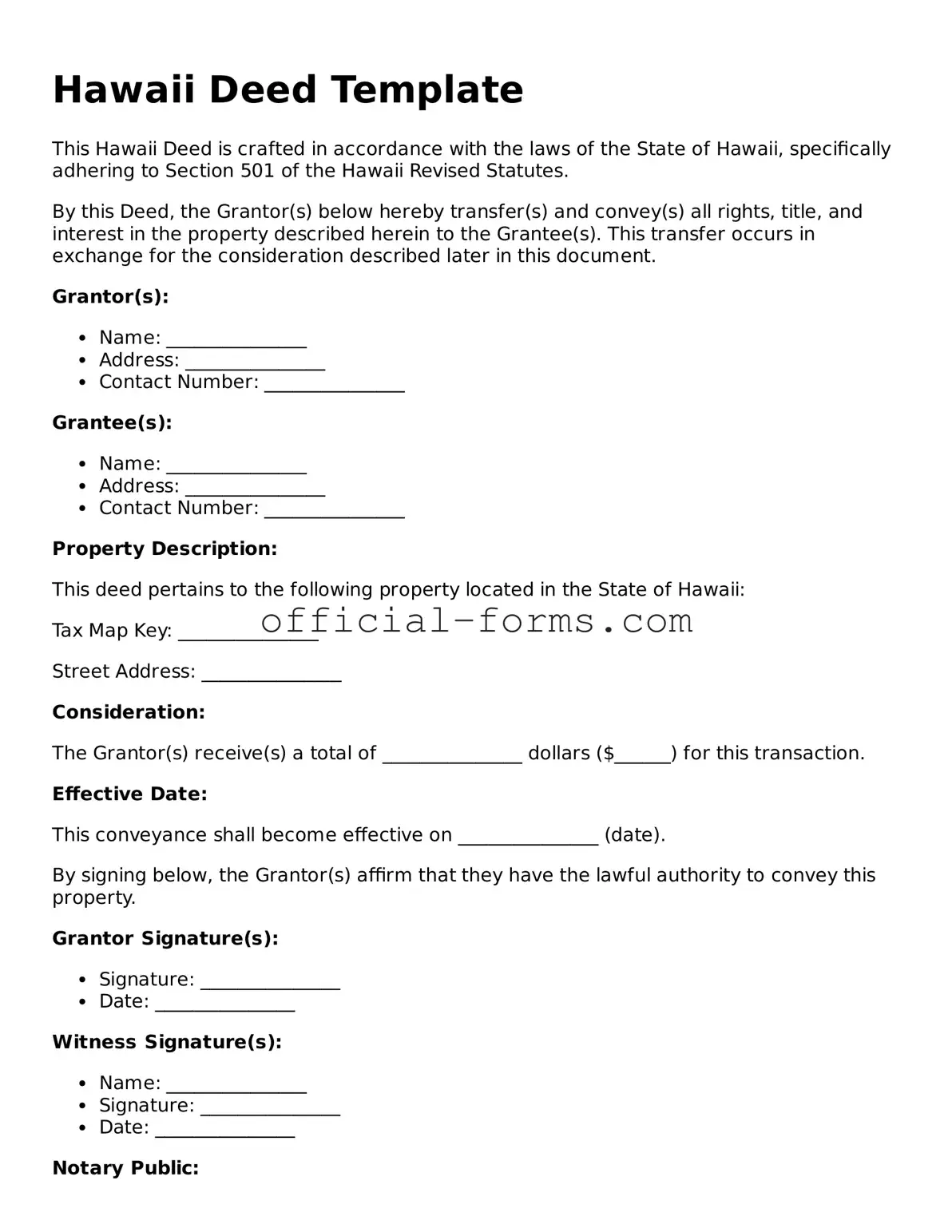When it comes to transferring property in Hawaii, understanding the Hawaii Deed form is essential for both buyers and sellers. This legal document serves as the official record of the transfer of ownership, ensuring that the transaction is recognized by the state. The deed must include critical information such as the names of the parties involved, a clear description of the property being transferred, and the signature of the grantor, which is the person transferring the property. Additionally, it is important to note that the deed must be notarized to be legally binding. Depending on the specific circumstances, different types of deeds may be utilized, such as warranty deeds or quitclaim deeds, each offering varying levels of protection and assurance regarding the title. Failure to complete the deed correctly can lead to significant complications, including disputes over property rights or issues with future sales. Therefore, understanding the nuances of the Hawaii Deed form is not just advisable; it is critical for ensuring a smooth and legally sound property transaction.
